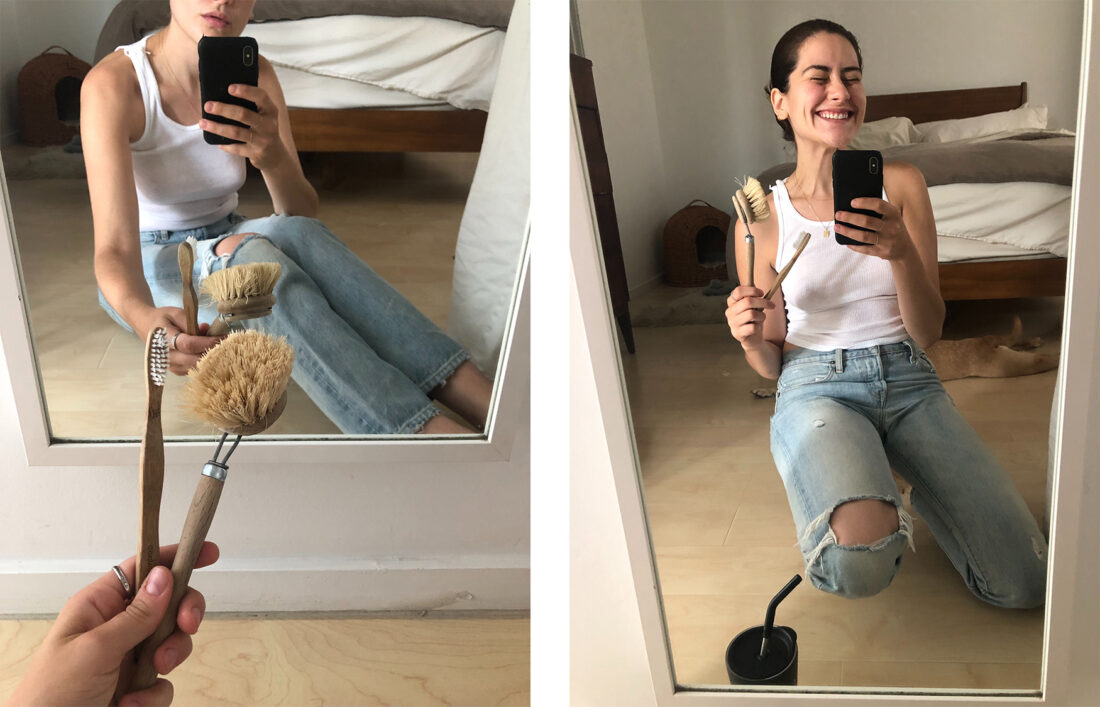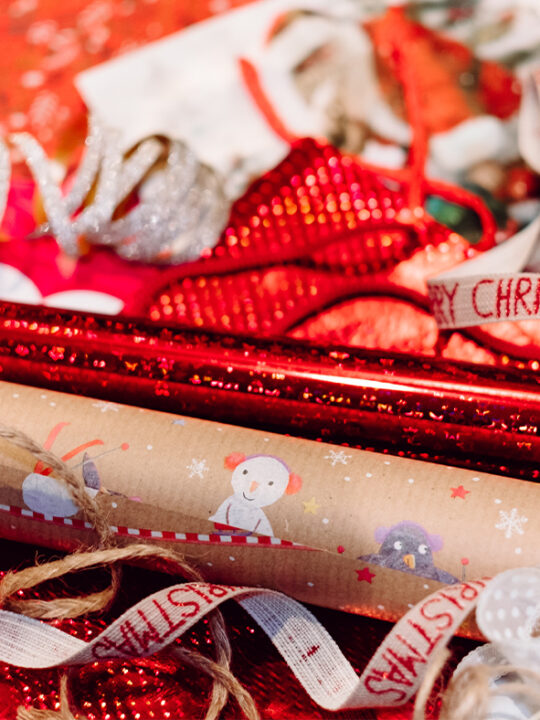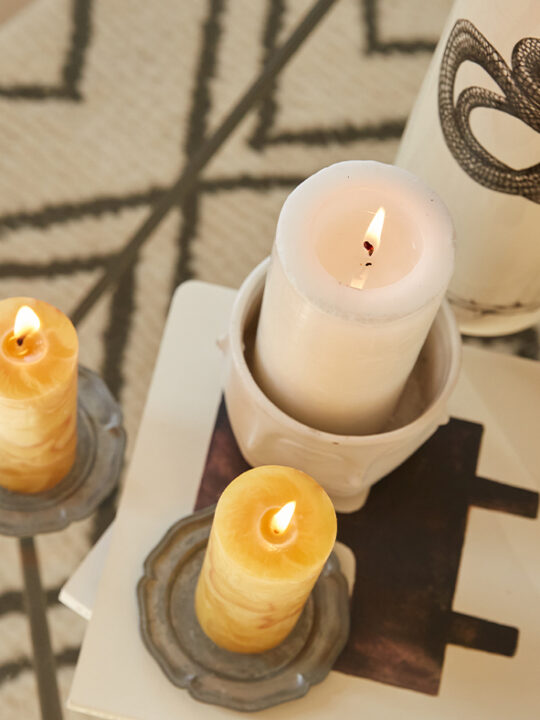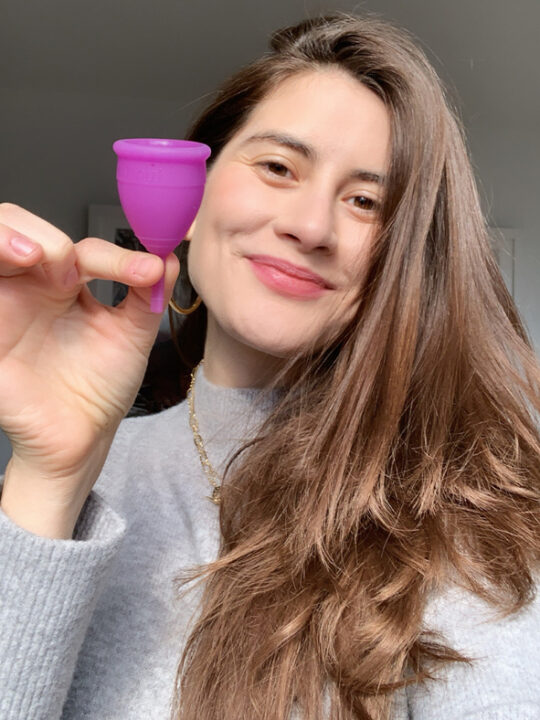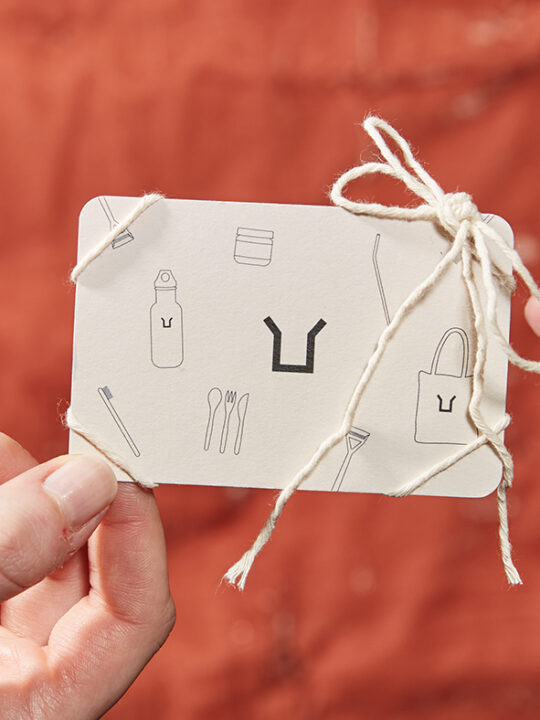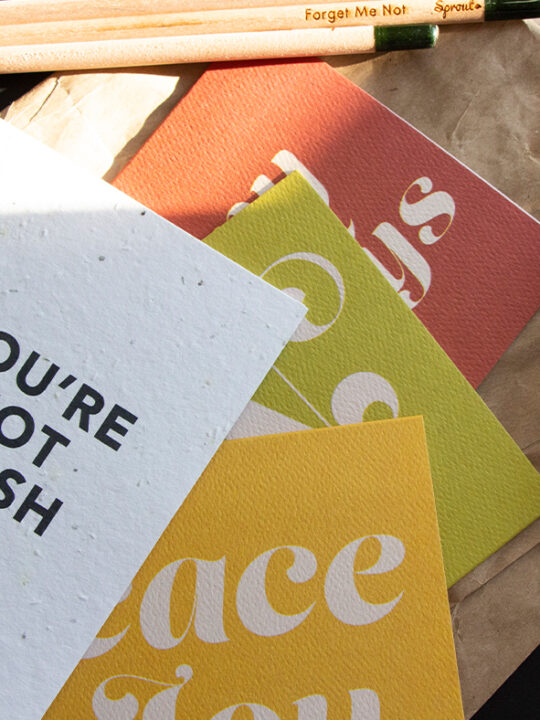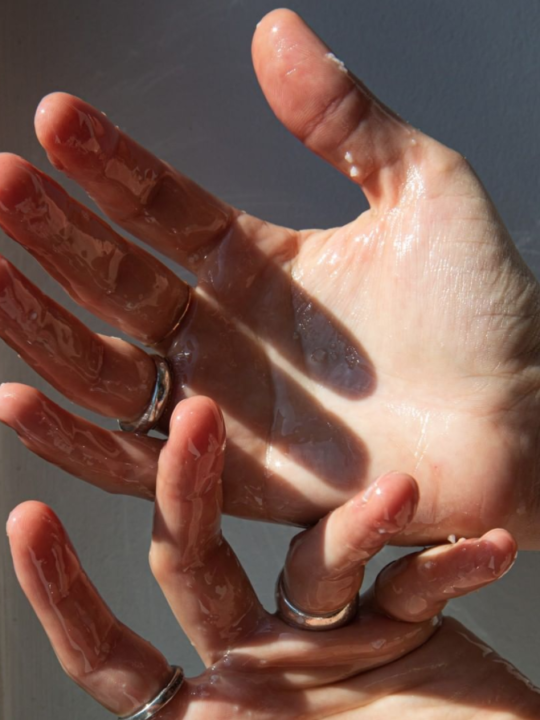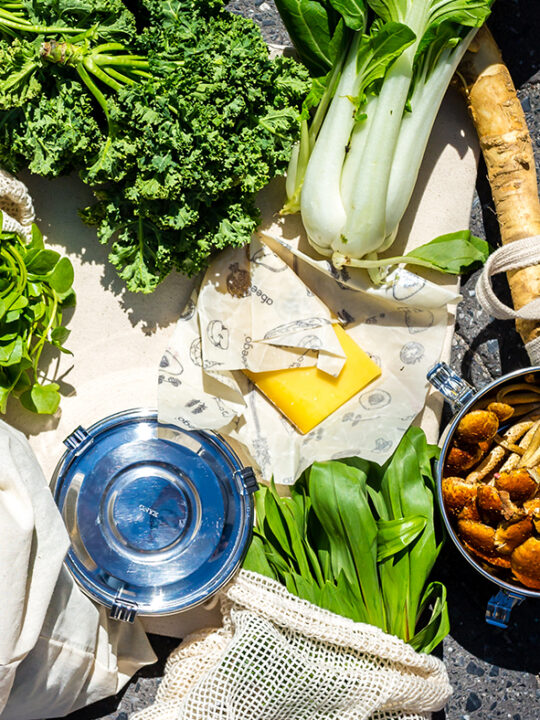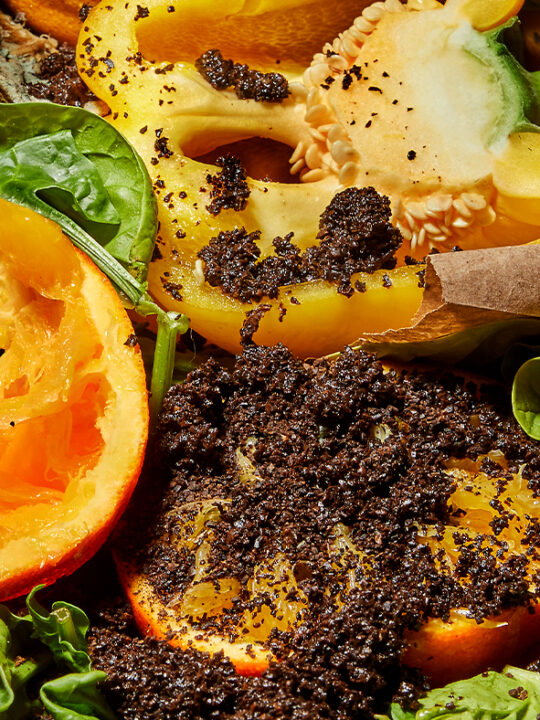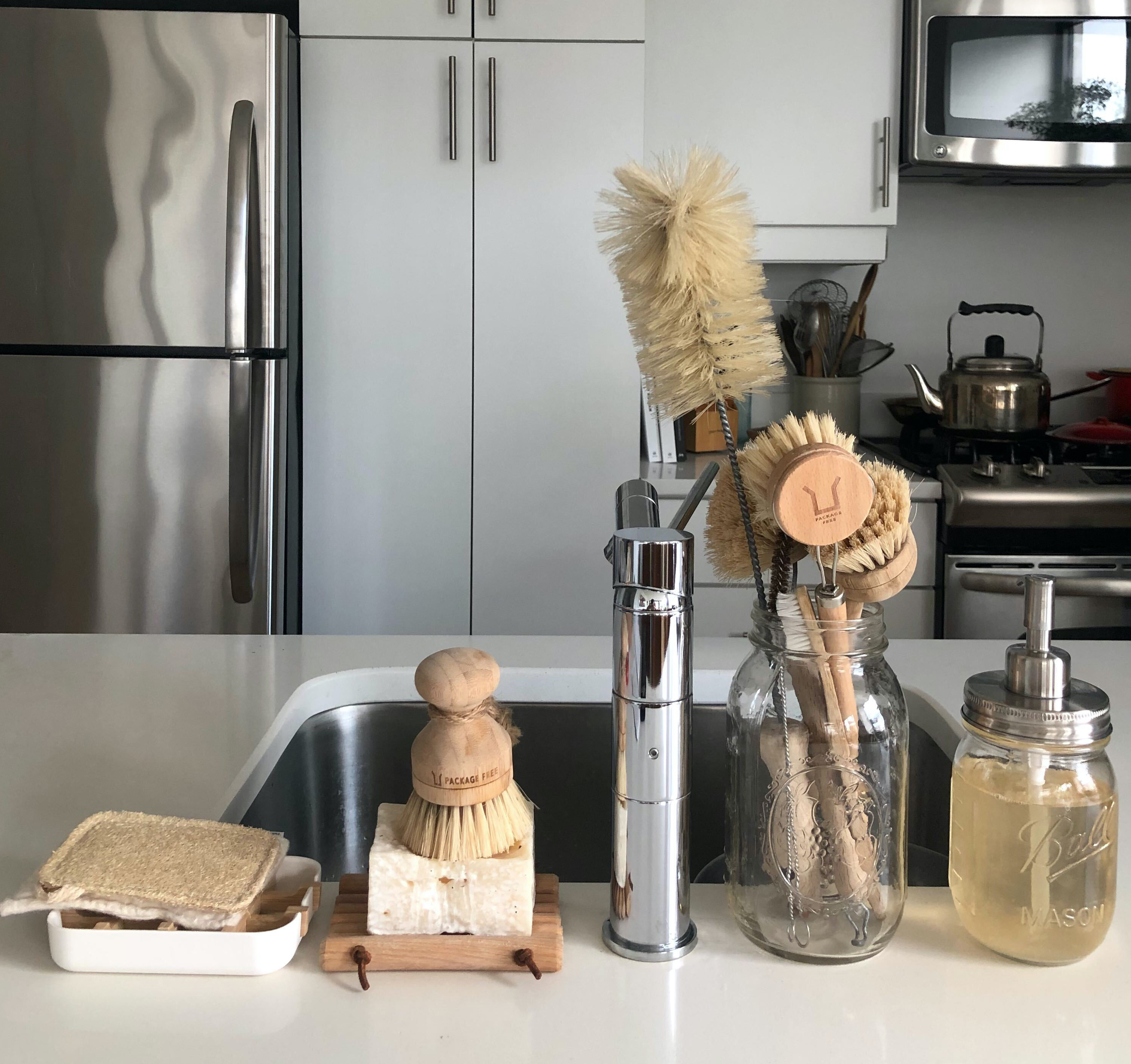
Plastic Free July might look a little different this year—and that’s okay.
Like many of us, when the reality of COVID-19 set in, I made some choices that went against the way I have lived my life for the past 8 years. I bought items in plastic, and lot’s of it (you can read the full story here). In retrospect I may have made decisions differently if not for the sense of urgency I was feeling, but I do not regret choosing to put my safety first.
My takeaway: during this time, your personal and community wellbeing should be the priority, and if that means making exceptions such as using single-use PPE, that’s okay. The current situation warrants a readjustment of expectations when it comes to being 100% plastic free.
What does that mean for Plastic Free July? My takeaway is that Plastic Free July is a great opportunity to bring awareness to the waste in your life and the changes that you CAN make to make a positive impact on the environment.
Here are some ways to participate in Plastic Free July this year:
Before jumping in, a good place to start is listing out your values and why you’re wanting to move towards a plastic free lifestyle and ask yourself how you can align with them more every day. Maybe you’re a surfer and you’re done seeing tiny bits of plastic wash up on the shore. Or maybe you’re fed up with our political leaders not creating or passing progressive climate change legislation? Write down your reasoning(s) somewhere permanent–like in your phone notes, or on social media so that you can reference them whenever you need a little motivational kick. Having strong reasoning always helps in holding yourself accountable to shifts in behavior.
Trash Audit + Goal Setting
Use this time to reflect on your current lifestyle, and game plan for the future. Are there areas in your life where you’re creating a lot of trash? The easiest way to answer that question is by digging through your trash (not kidding) and making a note of the items that you commonly see (if the list is as long as a CVS receipt, don’t worry – that means more opportunity for sustainable swaps!) Digging through your trash can tell you a lot about your habits, and can identify categories for you to focus on. Maybe you notice that you’re throwing away lots of shampoo bottles? Or toothpaste tubes? Maybe snack packaging? Or maybe you’ve been burning through plastic dish soap bottles recently?
Once you’ve identified core areas to focus on, set goals for yourself that are specific, attainable, and timely. To help you set goals, here are some things to ask yourself…
“Do I really need this?”
Maybe you realize that you don’t really need that plastic packaged glitter eyeshadow. Make it a goal to use it up, and then research ways to probably recycle or dispose of the packaging once it’s finished. Less can sometimes be more, but if you do feel like you need it, look for a more sustainable swap (like this biodegradable glitter from Package Free!)
It’s also important to recognize that if an item makes you really happy and you love it and it feels like a sacrifice to give up, don’t! There are probably low hanging fruit swaps that you can make that don’t feel like a sacrifice and still have a positive impact on the environment and you can re approach that item in the future.
“Can I use something that I already own, or make it, instead of buying something new?”
Did you know that you can make a lot of your own beauty products, instead of buying them now (which can also be more cost effective — win win!) If you’re up for it, here are my DIY recipes for deodorant, toothpaste, and lotion! Making this in bulk can be cost efficient too!
“Is there a more low waste option available?”
If you notice that your trash has a lot of…
…plastic bottles, coffee cups, and straws, maybe it’s time to invest in reusables.
…takeout containers, test out making bigger batches of meals, and save the leftovers in reusable contains for easy grab-and-go meals.
…packaging from snacking, try making your own snacks ahead of time (like my favorite DIY granola), and store them in reusable bags or tins.
…single-use period products, maybe try out a menstrual cup or reusable, washable pads.
For a list of other sustainable alternatives, check out this post or shop our selection at Package Free.
Reduce Food Waste
If you can’t reduce plastic this year, focus on other areas of waste in your life–like food waste! Over 50% of all produce in the US is thrown away. Composting is a great way to reduce waste created from not-normally-eaten items like peels and stems (check out this post to learn about composting), and for anything edible, save them to use up later!
Another great way to reduce food waste is proper food storage. Did you know that taking kale off of the stem helps to keep water in the leafy green part and helps it last longer? Did you know that keeping carrots and celery in water helps to keep it firm longer? Tricks like this and proper food storage containers (like these can) really help to cut down on food waste. Not only does this decrease methane emissions, it saves money as the most expensive food we buy is what is thrown away.
Advocacy
Individual action is awesome and my whole reason for starting Trash is for Tossers and for going Zero Waste, is to live in alignment with my values and to create the world I want to live in. But in addition to bottom up approaches like individual action and grassroots activism, I am a huge proponent for top down action as well because we are living in a broken system and we need systemic change. Allocating time during Plastic Free July to write to your local government and urge them to invest in better recycling programs, city-wide composting, public transportation, and any other programs that align with your values for a more equitable, sustainable, and just future. Or send a note to your favorite ecommerce business urging them to switch to more sustainable packaging, tell them they can look at Package Free for inspiration, wink, wink. Your voice can make a difference!
Responsible Disposal
Like I mentioned earlier, our personal and community wellbeing should be the priority right now, and if that means making exceptions such as using single-use PPE, that’s okay. If you are looking for ways to keep PPE out of landfills, TerraCycle is always a great option. PS, I know that these boxes are not a low financial lift, but a great way to get once could be to find friends who want to reduce PPE waste like you and share the cost! With 10 friends, the box is just over $10 per person. To paraphrase Margaret Mead, never underestimate the power of a small, but committed group of individuals!
Support and Education
There are organizations of all sizes doing great work in the Social and Environmental Justice space. Find ways to support them either with your time, talent, or money. You can find a roundup of Social and Environmental Justice organizations and resources here.
You can also use this time to deepen your understanding of environmental issues (here are some of my favorite books and documentaries), or to look into the 2020 Presidential candidates’ stances on climate change and how they plan to prioritize marginalized and vulnerable populations (here is a nice cheatsheet).
PS, did you know that climate change negatively impacts BIPOC populations the most? Caring about climate justice is an important step for racial justice. Especially for my readers in positions of financial and racial privilege, it’s important to remember that on your journey to reduce waste and mitigate climate change, your work is creating a more just and equitable future, which is why it is so important to step up, do the work, and play your part in combating the climate crisis. Every little bit helps.
Even if you can’t go fully plastic free this July, there are other ways of making the world less trashy! How are you participating in Plastic Free July this year? Let me know in the comments!
